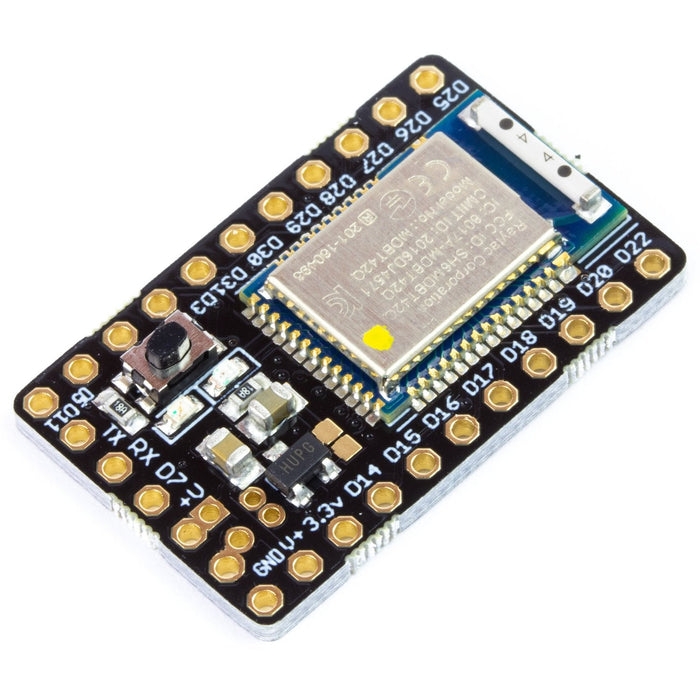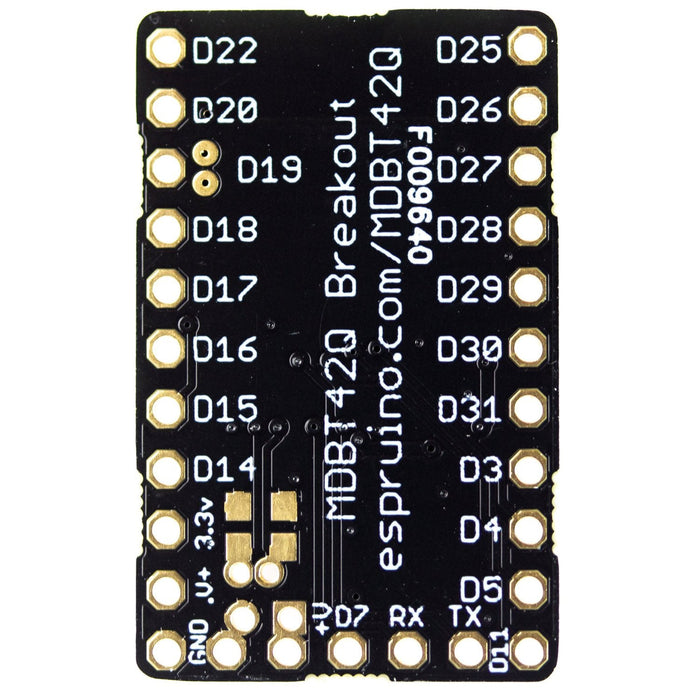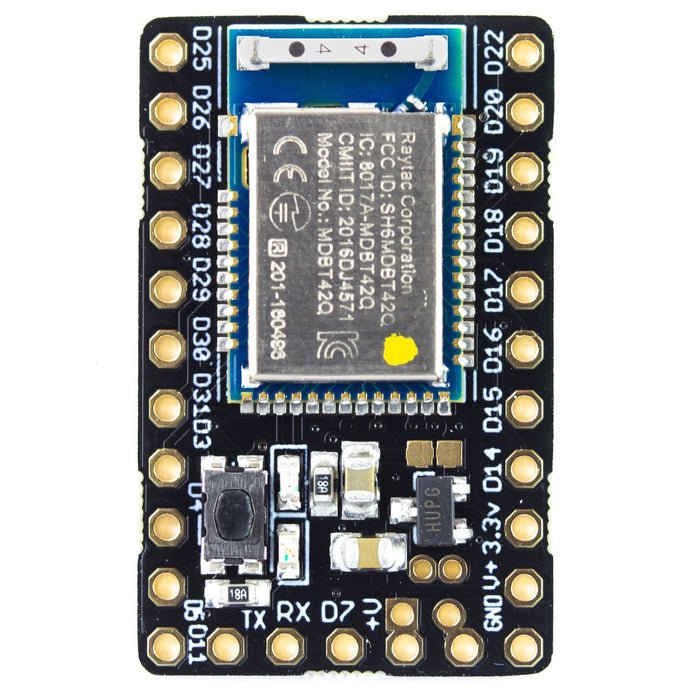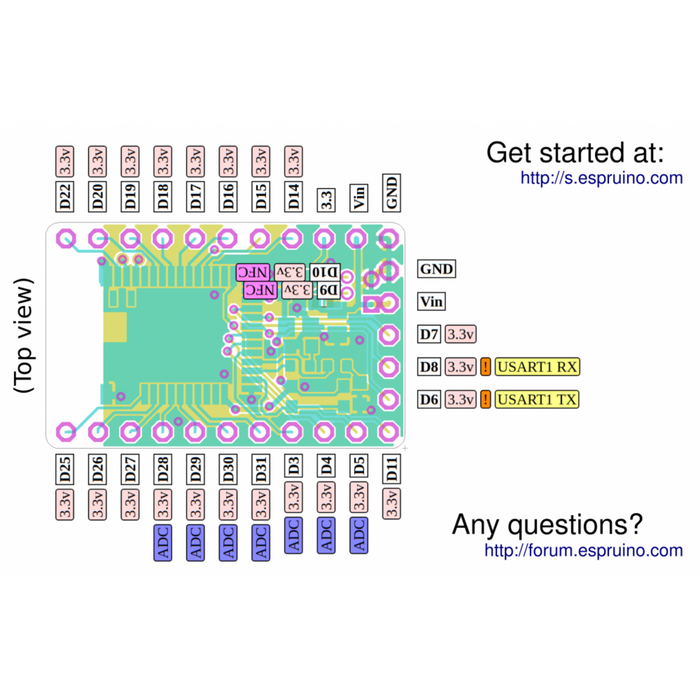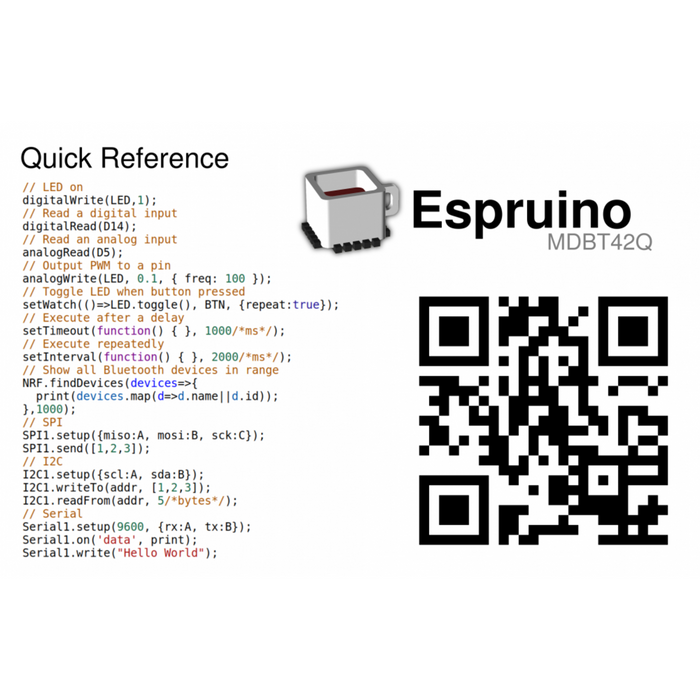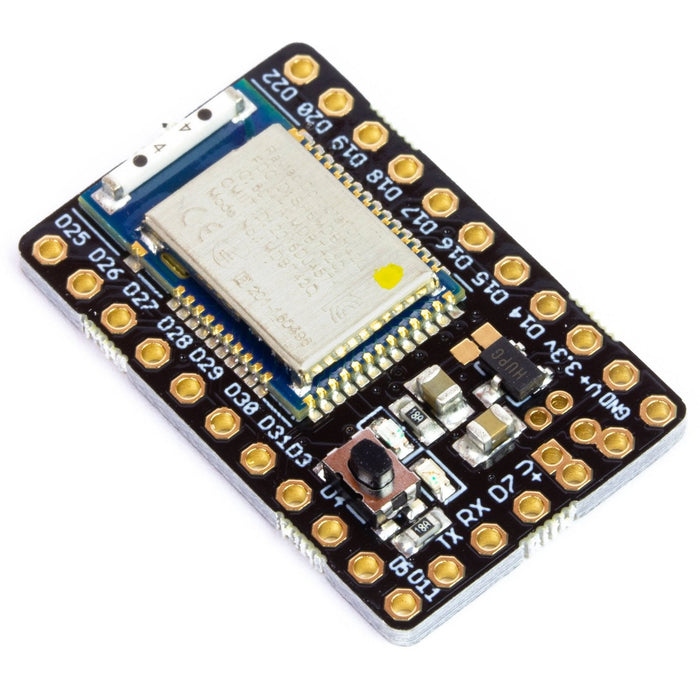
MDBT42Q Breakout
This board has the same Bluetooth LE module that used on Puck.js and Pixl.js, pre-programmed with Espruino. Just apply power, connect with Bluetooth LE or Serial and start writing JavaScript!
This is a board with 0.1" pins, a voltage regulator, 2 LEDs and a button. It's thin, small, and very power efficient.
Features
- Bluetooth Low Energy
- Espruino JavaScript interpreter pre-installed
- nRF52832 SoC - 64MHz ARM Cortex M4, 64kB RAM, 512kB Flash
- 32 x GPIO (capable of PWM, SPI, I2C, UART) on 0.7mm Pitch, including 8 analog inputs
- 1.7v - 3.6v voltage range
- Built in thermometer
- NFC tag programmable from JavaScript (when an antenna is connected)
- Dimensions: 16mm x 10mm x 2.2mm thick
Breakout board features
- 2.5 - 16v voltage input, 20uA power draw when advertising
- 0.1" pin header (With 22 GPIO, 7 analog inputs)
- Red and Green LEDs
- Button
Getting Started
Apply power between the V+/Vin and GND pins. Any voltage between 2.5 and 16 volts will work - just be careful not to get the polarity wrong! Check the pinout for more information on the location of pins.
Once powered up follow the Getting Started Guide for details on getting the IDE connected wirelessly. You can also use a wired connection if you prefer.
On-board peripherals
- There is a button (
BTN/BTN1) between pinD0and 3.3v. Pulling this high on boot enables the bootloader. - There is a LED (
LED/LED1) between pinD1andGND. This is flashes at boot and also indicates bootloader mode.
The breakout board also contains a green LED on pin D2. As of build 1v99 this isn't mapped to a built-in variable, but a simple global.LED2=D2 command will add it.
Tutorials
First, it's best to check out the Getting Started Guide. After that, you can find more information and more tutorials here
The MDBT42Q Breakout appears in the following collections:

